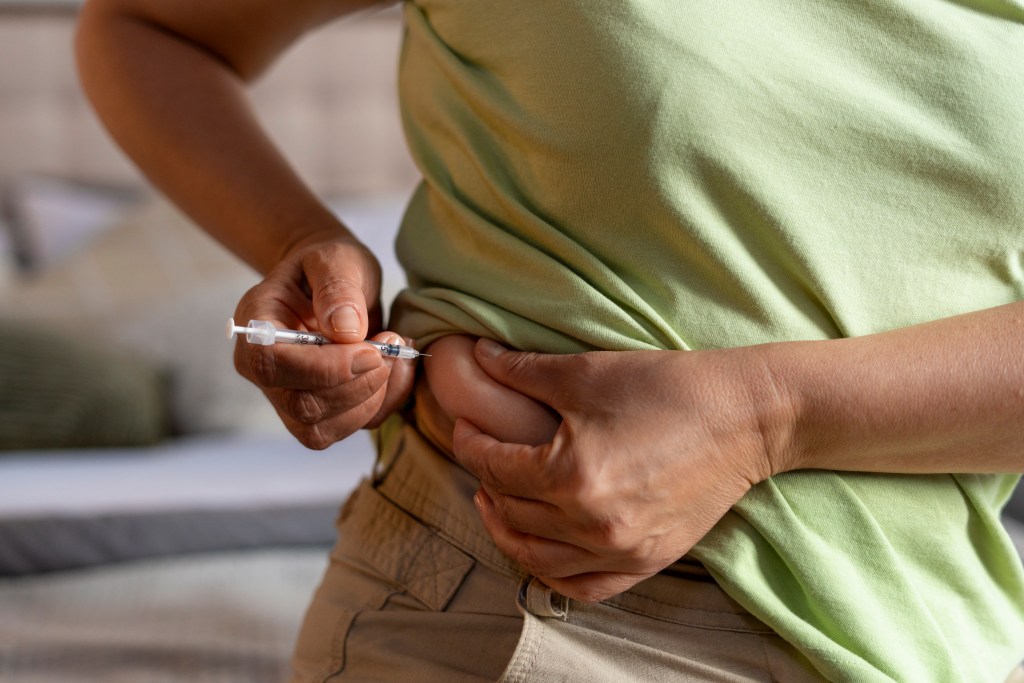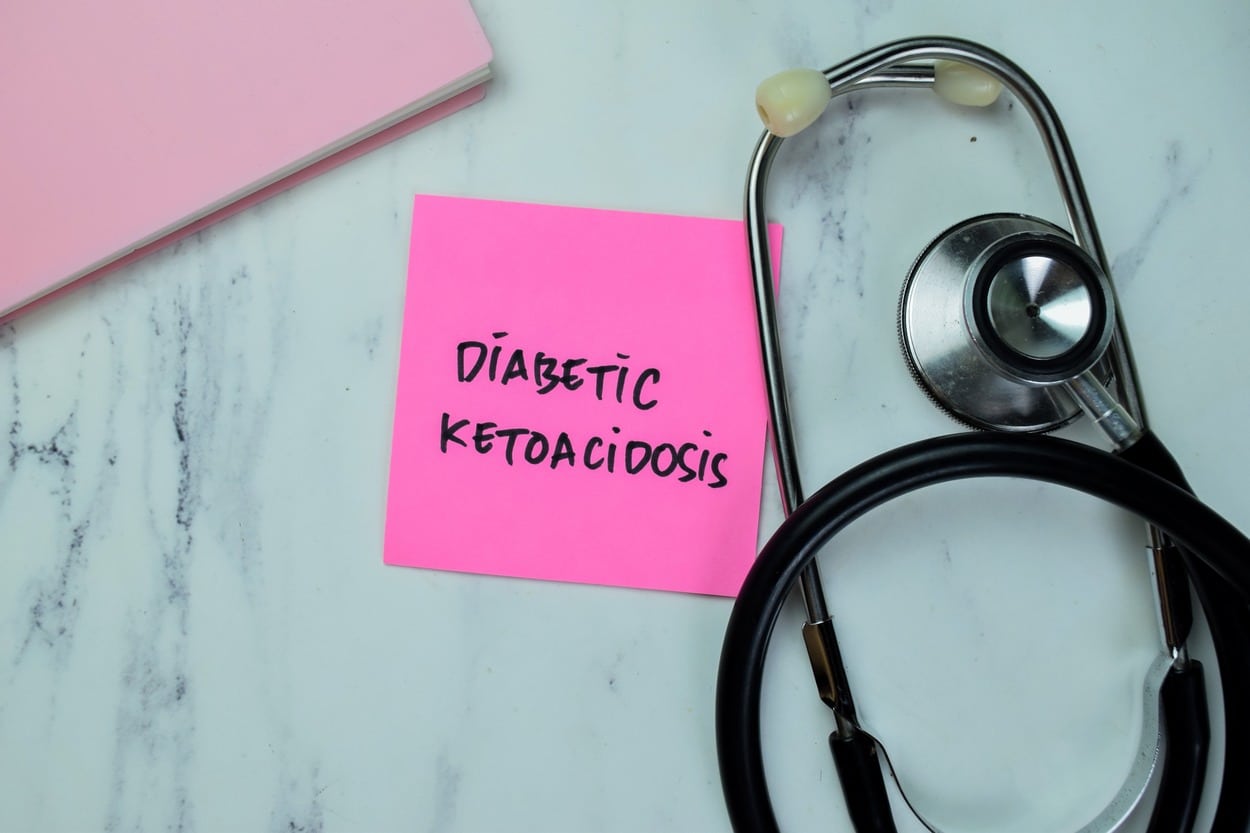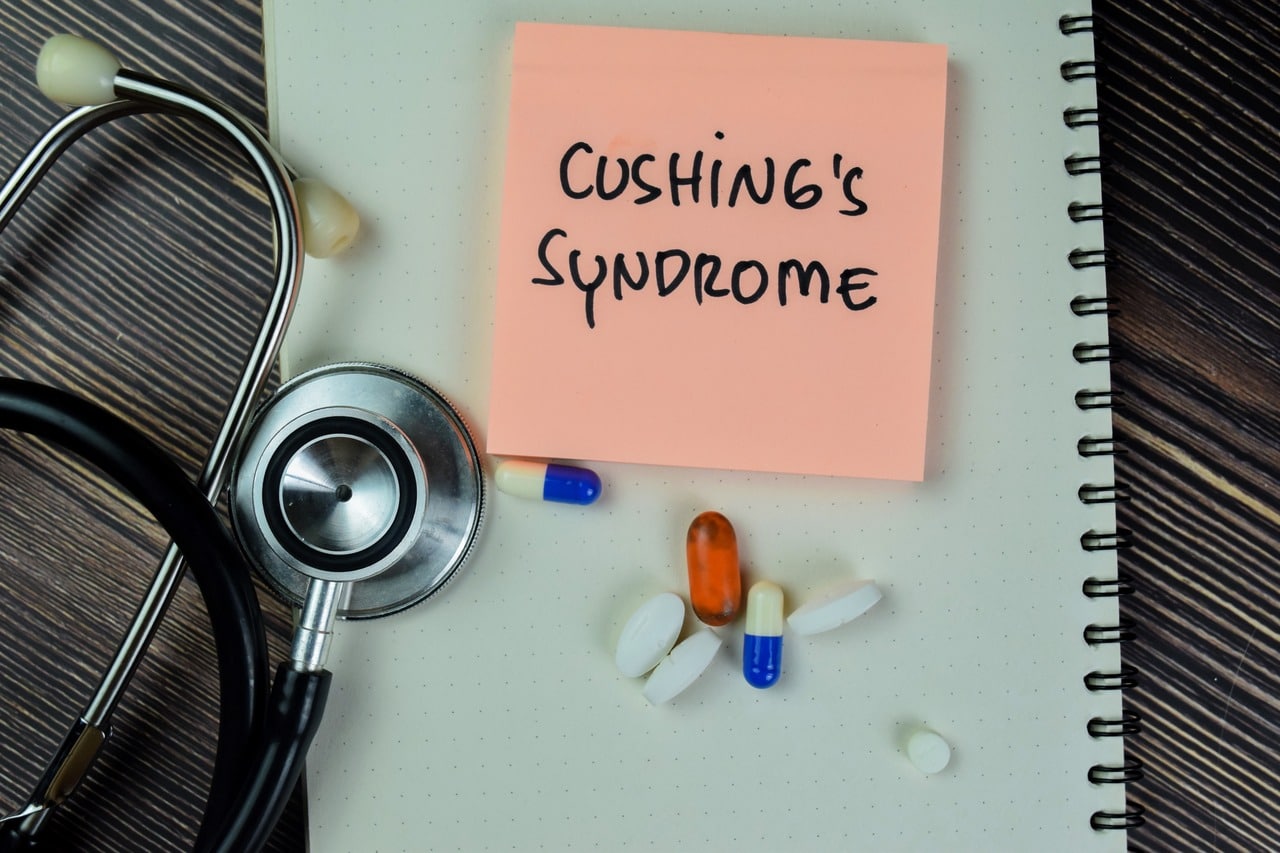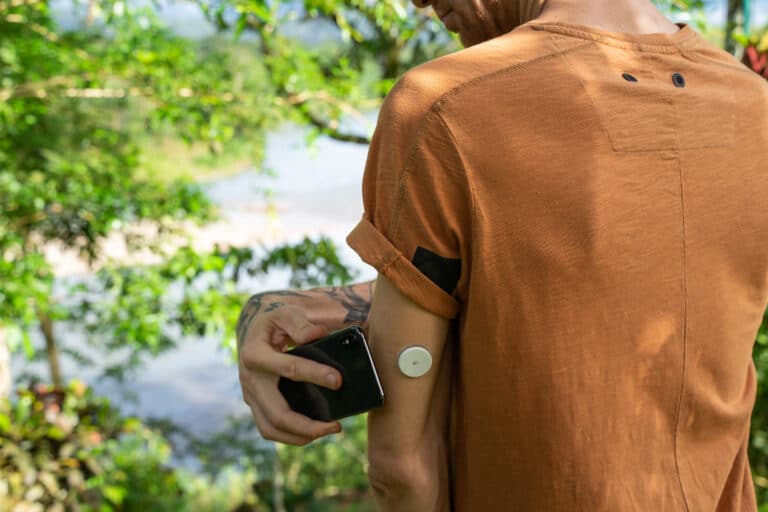
” data-medium-file=”https://i0.wp.com/davidsway.blog/wp-content/uploads/2023/11/side-view-woman-injecting-insulin-home.jpg?fit=300%2C200&ssl=1″ data-large-file=”https://i0.wp.com/davidsway.blog/wp-content/uploads/2023/11/side-view-woman-injecting-insulin-home.jpg?fit=1000%2C667&ssl=1″ src=”https://i0.wp.com/davidsway.blog/wp-content/uploads/2023/11/side-view-woman-injecting-insulin-home.jpg?resize=1000%2C667&ssl=1″ alt=”Diabetic injecting insulin.” width=”1000″ height=”667″ data-recalc-dims=”1″>
I’m sorry with my lack of writing over the last few months, but I have had deaths in my family, and have watched a good friend come closer to losing his life than he may appreciate.
Look, I am just going to be bluntly honest here – if you have type 2 diabetes and are not taking it serious enough to try to control it, you are a damn fool.
And yes, I pray these blunt words get your attention!
I have know far too many people who have either died as a result of uncontrolled type 2 diabetes, or lost toes, feet, and even their legs.
The absolute majority of people whom I have known personally that have suffered amputations, or death with diabetes did not do anything to take this unnecessary disease serious. Uncontrolled type 2 diabetes is such a serious medical issue that when I was trucking for a living, I would refuse to run with a co-driver who did nothing to control their disease. I would rather run alone 3000 miles a week, delivering construction and industrial supplies for my employer than to have a co-driver in the cab of my truck who did not take their diabetes serious.
Just yesterday, one of my immediate family members had to make the decision to remove his son from life support after he was found unconscious and with a blood sugar level that had crashed to 30. This condition is called hypoglycemia which occurs when someone with diabetes doesn’t have enough sugar (glucose) in his or her blood. Glucose is the main source of fuel for the body and brain, so you can’t function well if you don’t have enough.
When your blood sugar gets too far low – you can die!
Symptoms can differ from person to person or from episode to episode. Some people don’t have any noticeable symptoms. It’s also possible you won’t have any symptoms of hypoglycemia. It’s important to monitor your blood sugar levels regularly and keep track of how you’re feeling when your blood sugar is low.
Make sure your family, friends and co-workers know what to do in an emergency.
Inform people you trust about hypoglycemia. If others know what symptoms to look for, they might be able to alert you to early symptoms. It’s important that family members and close friends know where you keep glucagon and how to give it so that a potentially serious situation can be easier to safely manage. Glucagon is a hormone that stimulates the release of sugar into the blood.
Here’s some emergency information to give to others. If you’re with someone who is not responding (loses consciousness) or can’t swallow due to low blood sugar:
- Call 911 or emergency services in your area.
- Don’t inject insulin, as this will cause blood sugar levels to drop even further
- Don’t give fluids or food, because these could cause choking
- Give glucagon by injection or a nasal spray, only as directed by emergency personnel.
If you have symptoms of hypoglycemia several times a week or more, get your butt in to see your doctor. He may need to change your medication dosage or timing, or otherwise adjust your diabetes treatment regimen.
The flip side to hypoglycemia when one is diabetic is hyperglycemia – your blood sugar is too high.
Both low and high blood conditions are a direct result of not controlling your diabetes.
A couple of years ago, the lady who lived a few houses down from me had to have a few of her toes amputated as a result of her uncontrolled diabetes. I recently saw her and couldn’t help to notice that she is now missing her lower leg and foot.
My friend who suffers from type 2 diabetes stepped on something this summer that broke the skin on the bottom of his foot. As is common when blood sugar is not controlled, he felt no pain as infection began setting in and a red streak had traveled from his foot up his leg to his knee. That ulcer that occurred on the bottom of his foot was not healing, and eventually it created a hole from the bottom to the top of his foot. It took several months of emergency room visits and heavy duty antibiotics before his foot had healed. At one point, bone and connective tissues were clearly visible. Does this sound like his diabetes was under control to you?
A diabetic foot ulcer is an open sore or wound that occurs in approximately 15 percent of patients with diabetes, and is commonly located on the bottom of the foot. Of those who develop a foot ulcer, six percent will be hospitalized due to infection or other ulcer-related complication.
Did you know that type 2 diabetes is the leading cause of nontraumatic lower extremity amputations in the United States, and approximately 14 to 24 percent of patients with diabetes who develop a foot ulcer have an amputation.
Research, however, has shown that the development of a foot ulcer is preventable!
Ulcers form due to a combination of factors, such as lack of feeling in the foot, poor circulation, foot deformities, irritation (such as friction or pressure), and trauma, as well as duration of diabetes. Patients who have diabetes for many years can develop neuropathy, a reduced or complete lack of ability to feel pain in the feet due to nerve damage caused by elevated blood glucose levels over time. The nerve damage often can occur without pain and one may not even be aware of the problem.
How Can a Foot Ulcer Be Prevented?
The best way to treat a diabetic foot ulcer is to prevent its development in the first place. Recommended guidelines include seeing a podiatrist on a regular basis. He or she can determine if you are at high risk for developing a foot ulcer and implement strategies for prevention.
You are at high risk if you:
- Have neuropathy
- Have poor circulation
- Have a foot deformity (i.e. bunion, hammer toe)
- Wear inappropriate shoes
- Have uncontrolled blood sugar
Reducing additional risk factors, such as smoking, drinking alcohol, high cholesterol, and elevated blood glucose are important in the prevention and treatment of a diabetic foot ulcer. Wearing the appropriate shoes and socks will go a long way in reducing risks. Your podiatric physician can provide guidance in selecting the proper shoes.
Learning how to check your feet is crucial in noticing a potential problem as early as possible. Inspect your feet every day—especially between the toes and the sole—for cuts, bruises, cracks, blisters, redness, ulcers, and any sign of abnormality. Each time you visit a health care provider, remove your shoes and socks so your feet can be examined. Any problems that are discovered should be reported to your podiatrist or a medical professional as soon as possible, no matter how “simple” it may seem to you. (1)
You can prevent, or at least keep your diabetes under control!
Prevention and ongoing treatment of diabetes involves maintaining a healthy diet, exercising regularly.
Do not lament that you cannot control your diabetes. You can, but you must decide whether unhealthy food choices coupled with a sedentary lifestyle is more important to you than your appendages, or even your life.
Your diet plays the most important role in the development and management of diabetes. Eating the wrong foods can raise your blood sugar and promote inflammation. Whether you’re managing your diabetes or want to avoid developing the disease, here are 10 foods you’ll want to avoid:
1. SUGAR-SWEETENED DRINKS
Sugary beverages are probably the worst thing diabetics could buy at the store. They are extremely high in simple carbs (sugar), with your average 12 oz soda containing 38 grams of sugar. Plus, these beverages are usually loaded with fructose, which can lead to insulin resistance.
Instead of sugary drinks like soda, try unsweetened tea or sparkling water.
2. TRANS FATS
Trans fats are created by adding hydrogen to fatty acids, making the product more shelf-stable. Although they don’t increase blood sugar levels directly like sugar, they’ve been shown to reduce “good” cholesterol and increase inflammation. This can lead to belly fat and weight gain.
Common foods that sometimes contain trans fats include peanut butter, frozen dinners, coffee creamer, margarine, and grocery store baked goods.
3. SIMPLE CARBS (PASTA, WHITE BREAD, WHITE RICE)
Pasta, white bread, and white rice are processed foods that are high in simple carbs, which can raise your blood pressure. These foods usually contain very little fiber, which slows the absorption of sugar in the bloodstream. You can live just fine without these foods.
Instead of simple carbs, opt for whole grains like whole wheat pasta, whole wheat bread, quinoa, farro, and brown rice.
4. YOGURT WITH ADDED SUGAR
Plain yogurt is full of calcium, protein, and probiotics, all of which are essential nutrients for diabetics. The problem is, when you buy flavored yogurt with added fruit it’s typically loaded with sugar.
You’ll also want to avoid non-fat yogurt, which is usually higher in sugar. Contrary to popular belief, high-fat whole-milk yogurt is actually better for you. I personally eat 5% milk fat greek yogurt flavored with sugar free water mix ins such as lemon flavored Mio.
Remember, not all fats are bad…
5. STORE-BOUGHT BREAKFAST CEREALS
While cereal isn’t as bad for you as it was 50 years ago, most are still packed with sugar. They are also low in protein, a key macronutrient that will stabilize your blood sugar throughout the day. If you are feeding your kids this crap, you are doing them a grave injustice by setting them up for future weight and health problems.
Instead, choose a high-protein, low-carb breakfast like eggs and whole-wheat toast or plain yogurt with homemade granola.
6. HONEY AND MAPLE SYRUP
While cane sugar is arguably the worst perpetrator of blood sugar spikes, alternative sweeteners like honey and maple syrup aren’t any better for diabetics.
Honey and maple syrup aren’t as processed as regular sugar, but they contain just as many simple carbs – sometimes even more. For diabetics it’s best to avoid any added sweeteners, these two included.
7. DRIED FRUIT
Fruit is certainly good for you, but when it’s dried the loss in water content results in high sugar concentration. For example, one cup of raisins contains 115 grams of carbs – compared to 27 grams for one cup of grapes.
Diabetics, like everyone, still need fruit in their diet. Try to stick with lower-sugar fresh fruits like apples and berries.
8. FRUIT JUICE
Although fruit juice is certainly healthier than soda, unfortunately the effects on your blood sugar aren’t much different. This is true even for juices without any added sugar.
9. DEEP FRIED FOODS
Deep fried foods have been shown to produce high amounts of aldehydes, a toxic compound that can lead to inflammation. Plus, the unhealthy oils (canola, peanut, corn) these foods are fried in can lead to weight gain.
10. PIE, COOKIES, & CAKE
No explanation needed here…not surprisingly, any of these popular desserts can throw your blood sugar out of whack. You’ll want to be especially sure to avoid store-bought desserts, which often have added trans fats. (2)
If you have a sweet tooth, opt for fresh fruit or treats that are made with no added sugar.
Modern dietary management of diabetes essentially involves modifications of the quality and quantity of food which you can consume when you have type 2 diabetes.
The following guidelines are applicable to diabetes irrespective of type, weight status, age, gender, or occupation.
- Most of the carbohydrate consumed should be in the form of starch (polysaccharides) such as maize, rice, beans, bread, potatoes etc.
- All refined sugars such as glucose, sucrose, and their products (soft drinks, sweets, toffees, etc.) and honey should be avoided, except during severe illness or episodes of hypoglycemia. These foods contain simple sugar, which is easily absorbed causing rapid rise in blood sugar.
- Non-nutritive sweeteners, e.g., erythritol, saccharine, NutraSweet (aspartame) are suitable sugar substitutes for diabetic subjects, if they tolerate aspartame well.
- Animal fat such as butter, lard, egg yolk, and other foods high in saturated fatty acids and cholesterol should be reduced to a minimum and be replaced with vegetable oils, particularly polyunsaturated fats.
- Salt should be reduced whether hypertensive or not.
- Protein (fish, meat, beans, crab, crayfish, soy beans, chicken, etc.) and salt are restricted for those with diabetic nephropathy.
- Cigarette smoking should be avoided by diabetic patients. Alcohol should be taken only in moderation.
- The items allowed for free consumption include: Water, green leafy vegetables, tomatoes, onions, cucumber, aubergine, peppers, vegetable salad without cream. Any brand of tea, coffee, or drinks that contain very low or no calories.
- Patients treated with insulin or certain oral hypoglycemic agents, e.g., sulfonylureas must eat regularly and often to prevent hypoglycemia- 3 meals a day plus suitable snacks in between, e.g., fresh fruits.
- Small meals spaced over the day, rather than 1 or 2 big meals, are helpful in avoiding post-pyramidal peaks in blood sugar.
The bottom line is, you can either control your type 2 diabetes, or it will control you. The decision is yours to make – just remember though, it is your loved ones who will have to pick up all the broken pieces of your life should you decide to not keep this wholly preventable disease under strict control.
Disclaimer: If you have type 2 diabetes, or you suspect that you might, ensure that you visit your doctor and closely follow their directives to you.
(1) University of Michigan Health
(3) NIH National Institute of Diabetes and Digestive and Kidney Disease




